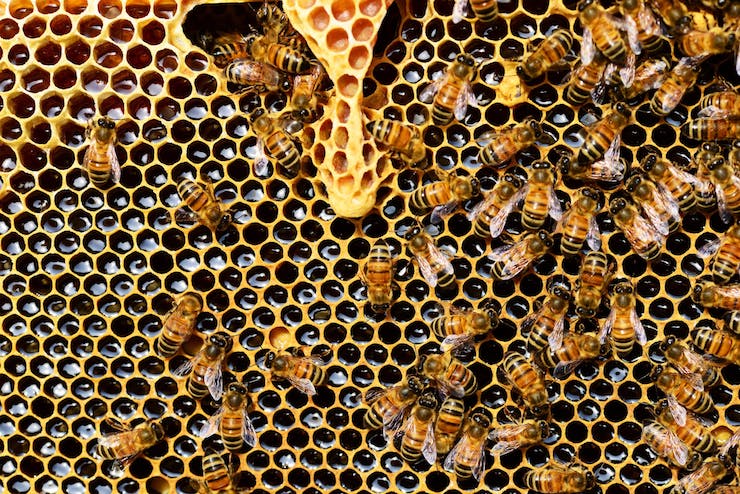
When it comes to insects, there are three types of people in the world. There are those that are terrified of them, those that could care less about them, or those who are fascinated by them. Bees in particular spawn very strong reactions from people. Some people, even the most composed, will run like wild from a bee. While others will look at a bee and see just how amazing of a creature they are. There are over 16,000 different species of bees that can be found on every continent except for Antarctica. Wherever in the world there are flowering plants that are pollinated by insects, there will be bees. For years scientists have studied bees and their pollination skills to help in understanding emerging technologies. A team of researchers from the UK have begun a new study on bees to help further drone technology.
Professor James Marshall of Sheffield University, UK recently presented his findings to the American Association for the Advancement of Science conference in Seattle, WA. Marshall is a Professor of Theoretical and Computational Biology at Sheffield University. Professor Marshall states, “I am an interdisciplinary researcher interested in behavior, its mechanistic bases, and its evolution. With various colleagues I apply a variety of mathematical and computational approaches to understanding how and why behaviors evolve. I am also interested in what engineering disciplines may learn from this study.” In particular, he looks to insects and the use of robotics to further his studies.
Professor Marshall partnered with Opteran Technologies to fund his research in the behavioral flight patterns of bees. Founded in 2019, Opteran is looking to create technological solutions backed by biological processes. They state their mission as, “We are heading back to nature to create heterogeneous neural systems that are capable of true autonomous thought and problem solving in uncertain environments.” Professor Marshall said, “There’s an awful lot of research and engineering in designing autonomous systems. And fundamentally we don’t have an autonomous system that is as efficient and robust as a honeybee.” He went on to explain, “Bees are really consummate visual navigators. They can navigate a complex 3D environment with minimal learning very robustly, using only a million neurons in a cubic millimeter of brain.”
To better understand how bees are able to instantly learn and navigate an environment Professor Marshall is running two stages of experimentation to reverse engineer how a bee’s brain works. The first stage was to follow a bee with radar to watch exactly how is moves, multitasks, and learns at rapid speeds all while optimizing the best path possible to collect nectar. To be able to do this the team first had to capture some bees and have them outfitted with transmitters. This portion of the project was led by Joe Woodgate of Queen Mary University of London. And as you can imagine, it was no easy task. He said, “Before we can track a bee with radar, we need to attach a small electronic tag to her back, which is easier said than done. They’re very good at escaping from us and when we do succeed, we’re left holding an angry bee which isn’t always the safest place to be.” Once this was accomplished the bees with a small chip and antenna, that is about the same length of the bee’s body, strapped to their backs were released to just do their thing.
The data collected from the bee’s flight paths provided Professor Marshall and his team with clues to the neural process that go through the bee’s brain. These neural processes can then be applied to AI learning patterns for autonomous drone flight. This leads to the second stage of testing that Professor Marshall is currently preparing for. It will entail once again capturing a bee. But this time, rather than attaching a radar transmitter to it’s back, they will carefully insert a tiny electrode into the brain a tethered bee. The electrode will provide the team with factual neural signals to correlate with the bees movements within a controlled environment. This data is then programed into “bee-like robots which can fly around lab behaving as a bee would, extracting information from the world,” Professor Marshall said.
The team has two different drones that they are using to test the data gathered by the bees. The first drone weighs 600grams and the second 250grams, while in comparison a bee only weighs one tenth of a gram. The drones are then being tested to fly through a lab with obstacles, with the neural learning from the data collected from the bees. The goal of this study is not so much to build a drone, there are plenty of excellent drones, but rather to build a perfect software system for drone platforms.
Professor Marshall says that his research is only in the beginning stages for now, the software won’t be safe and reliable for close to another five years. But once the software is complete, it could allow for drones to fly about freely without the fear of crashing into one another, people, vehicles, or other moving obstacles. As Chief Technology Officer at Opteran Alex Cope said, “Evolution has already done all the work for us so we’re using bio-mimicry to solve a major problem in drone engineering.”
|